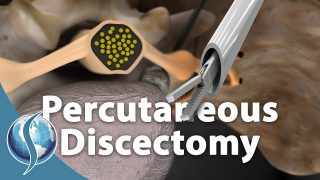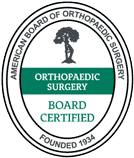Spinal Instability
What is spinal instability? The term is certainly a mouthful, and definitely can be confusing. If we break it down, “spinal” means spine, and “instability” means it is not stable. As we have described in other videos, the spine is composed of bones and a disc. Among the functions of the disc, is to provide […]
Why We Need A Spine
Why do we have a spine? It is because our bodies must protect the signals from your head to your body parts. Your brain sends communication to your muscles and other body parts by connecting brain signals to those parts. The connection to those parts is through the extension of the brain, the spinal cord, […]
Why we have Back Sprains / Strains
Most people sprain/strain ligaments and muscles of the back. The back is a very complex structure. The main purpose is to support your frame, allowing safe movement, while protecting the important vital organs in your abdominal area. The spine is also the conduit for the nerve signals going from your brain to the legs and […]
Treatment for Spondylolisthesis
Six percent of the human population has spondylolisthesis. Just because you have spondylolisthesis diagnosed on your studies does not mean it necessarily causes pain. There are three main types of spondylolisthesis. #1 is congenital. You are born with. #2 is traumatic. It developed either through repetitive stress or through trauma. Young gymnast, secondary to their […]
Spondylolisthesis Fusion vs ULBD
In Degenerative Spondylolisthesis, Unilateral Laminotomy for Bilateral Decompression Leads to Less Reoperations at 5 Years When Compared to Posterior Decompression With Instrumented Fusion Study Purpose Multicenter retrospective cohort study comparing the results of unilateral laminotomy for bilateral decompression versus posterior decompression with instrumented fusion for low-grade degenerative spondylolisthesis with lumbar spinal stenosis. View Full Study […]
Spondylolisthesis
In plain language, spondylolisthesis means the abnormal forward placement of a vertebral body in relationship to another vertebral body. It is more than a “slip of a disk”. To understand the finding, we must first understand the normal orientation of the vertebral bodies to each other, and the nature of the structures of the spine. […]
When to get an MRI
You have back or neck pain. When should you get an MRI of your spine? That’s a very common question presented to me during a visit to my office. Folks come in with complaints of neck or back pain and express concerns that their other doctors have not ordered an MRI. The truth is you […]
How to be a Patient Patient
Have back pain? Have a slipped disc? Frustrated? Scared? I know. I have been through the same. Disc herniations are common experiences. Luckily, most back pains get better without surgery. Most disc pains improve with time. You need to be patient. If you have watched my videos, we discussed how your body has the ability […]
Disc Herniations or Slipped Discs Get Better Without Surgery
Most disc herniations or slip discs get better without surgery. In fact, many herniated discs do not even cause pain. I know, not what you are told by others. But, it is the truth. Many research studies show herniated discs are found in many people who have no pain associated with the finding. But, if […]
Disc Herniation Vs. Disc Bulge
A Human disc can be described as a jelly donut. The soft jelly like center part of the disc is called the nucleus pulposus. The outer, strong fiberous part of the disc called the annulus. The annulus is like the bread the holds the jelly in place in a donut. Like a jelly donut, if […]









